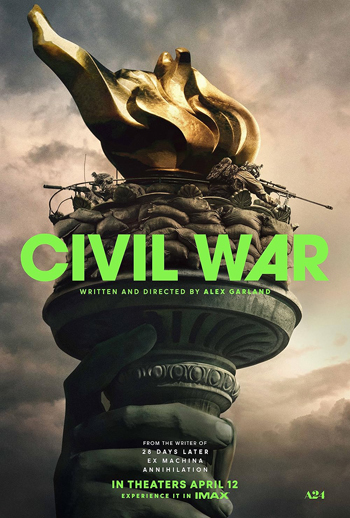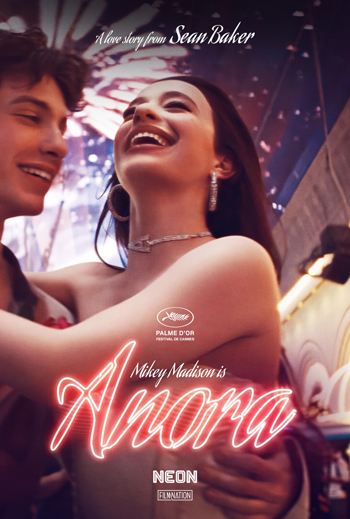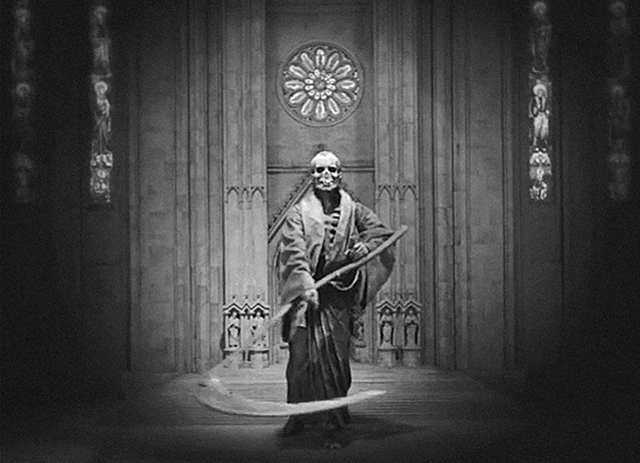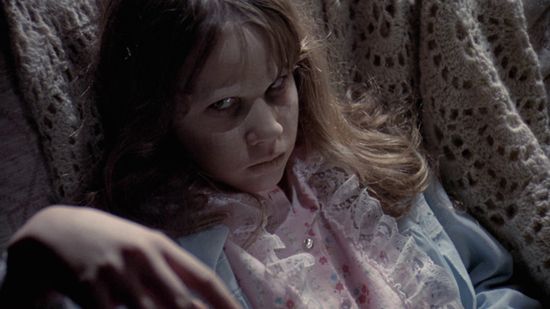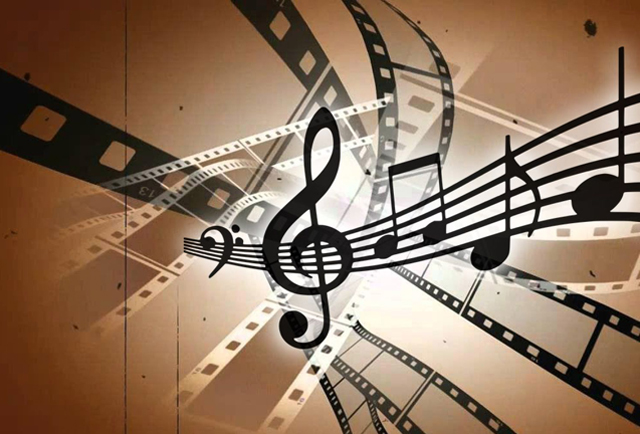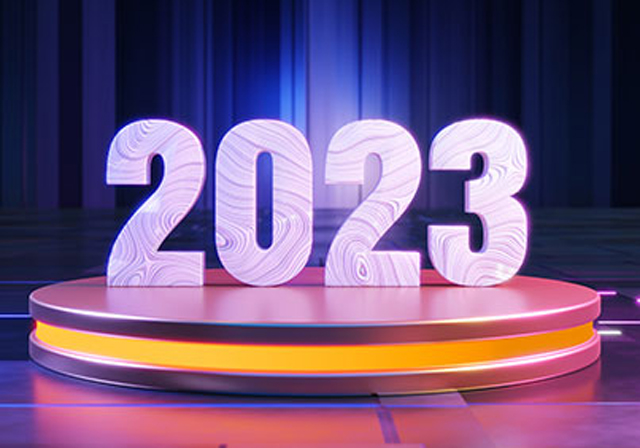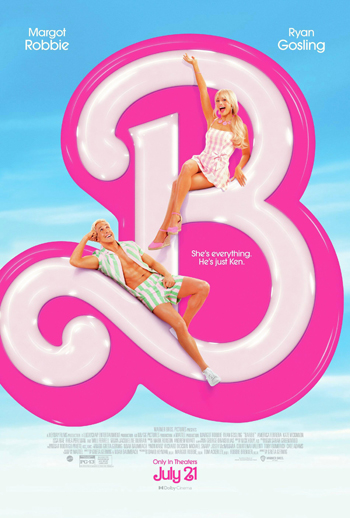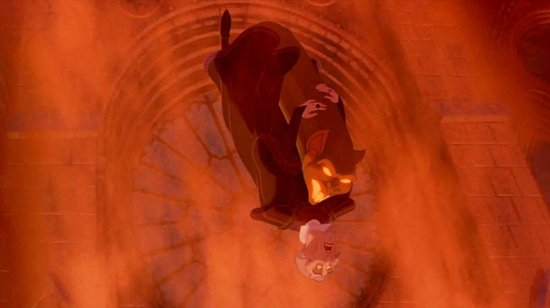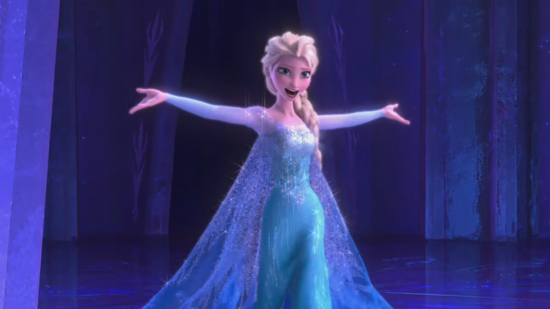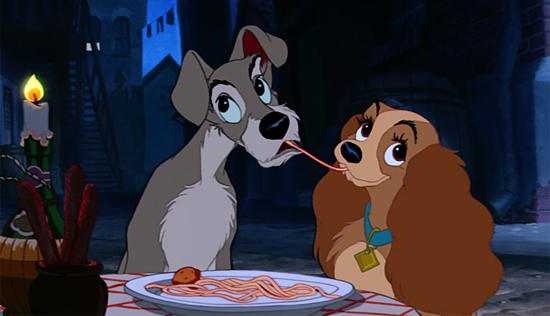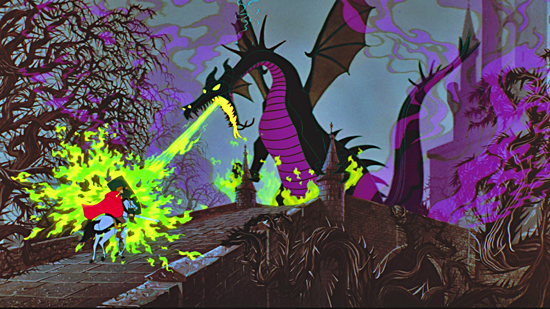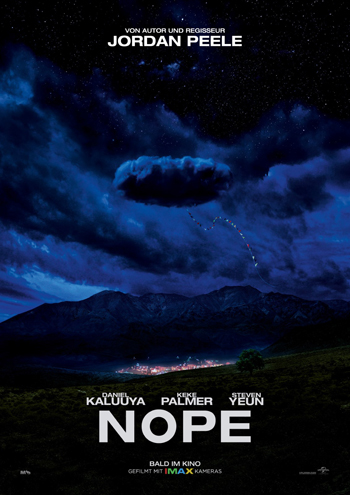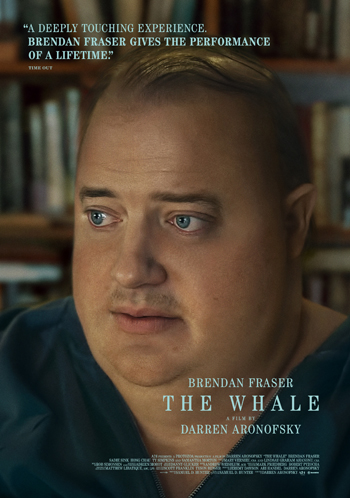
There are a variety of emotions that audiences go through when they’re watching a movie. They can be scared, they can have a good cry, or if the movie is terrible, they will likely be bored. But perhaps the greatest thing that can happen to an audience member while watching a movie is to have a really good laugh. Indeed, comedy is one of the weapons that cinema has at it’s disposal because it’s the style of filmmaking that best appeals to the communal activity that is going to the movies. It’s fine if you alone are laughing while watching a movie, but it’s even better when you are laughing along with other people in the theater. Laughter is contagious and it’s something that a lot of moviemakers hope to deliver with their movies. Even in a serious movie, a humorous moment can be a valuable thing, because it helps to break up the tension and allow an audience to relieve so pressure in between the heavier moments. Comedy has been a part of the fabric of cinema from the very beginning. Many comedy acts from vaudeville halls across the world began to take their routines to the big screen and became some of the most popular icons of the era. The evolution to talkies also benefitted from comedy, with funny movies favoring more quick witted jabs than physical slapstick. And all through the history of film, there has always been a place for a good comedy, even as tastes and norms have changed. In all that time, movies have helped to establish iconic comedic talent through the years, from Charlie Chaplain as The Tramp to Will Farrell as Buddy the Elf, there are plenty of iconic performances that have left audiences in laughing fits that not only leave a mark in their own time, but also have endured many decades later.
For this top ten list I had to make some hard choices about who to leave out and who to put in. There are so many good choices out there that it was hard to leave it to just 10. That’s why you’re not going to see comedy icons like Robin Williams, Eddie Murphy, Peter Sellers, Chris Farley, Leslie Nielsen, Adam Sandler, Mel Brooks, Charlie Chaplin or the Marx Brothers on this list, even though they do deserve a place on here. This list is purely my own preferences, so you can agree and disagree with my choices as much as you’d like. So, with all that said, let’s take a look at the Top Ten Funniest Performances in Comedy Movies.
10.

GENERAL “BUCK” TURGIDSON from DR. STRANGELOVE OR: HOW I LEARNED TO STOP WORRYING AND LOVE THE BOMB (1964)
Played by George C. Scott
One of the finest examples of a hilarious performance coming from an actor not known for doing comedy. Scott was renowned for his dramatic work in movies like Anatomy of a Murder (1959) and The Hustler (1961), but what surprised many people was a hidden talent in comedic acting as well. In Stanley Kubrick’s Cold War era satire, Scott plays a caricature of a very hawkish general who’s extremely suspicious of the “ruuskies” and yet has to deal with the fallout of one of his fellow generals going rouge and possibly setting off a nuclear war. Here Scott plays against the way you would typically suspect an actor like him would perform the role. He’s naturally fitted for playing someone of military brass, considering that years later he would give an iconic performances as General Patton, but as you watch Dr. Strangelove, you see that veneer of authority diminish in his character and reveal the manic buffoon underneath. It’s quite a feat when you’re sharing the screen with a comedic performer on the level of Peter Sellers and he’s the one who has to play straight-man to your performance. Everything about George C. Scott’s performance is beautifully eccentric, with him even getting into some slapstick-y pratfalls as well, including an unplanned tumble where Scott trips over his own feet, does a summersault, and still gets his line out; a hilarious blooper that Kubrick still left in the film. Even with the subject matter being as serious as it is, the comedic performances throughout the movie all still land and make the film a very unforgettable farce, with Scott’s Turgidson being one of the key highlights. And it’s a great example of why it works to the comedy’s advantage to have a serious actor delivering some truly ridiculous lines. Only Scott could sell the President on the idea of committing war crimes like it’s not such a big deal: “I’m not saying we won’t get our hair a little mussed.” It’s a risky thing to poke fun at something as deadly serious as nuclear Armageddon, but Dr. Strangelove managed to do it in a classic way, and show that even serious people can be silly.
9.

CHER from CLUELESS (1995)
Played by Alicia Silverstone
Proof that girls can be just as funny as the boys, this may be the most iconic comedic role for an actress in the last 50 years. Clueless was very much a product of it’s time, encapsulating the early to mid 90’s in a brightly colored time capsule. But it’s the lead performance by Alicia Silverstone as the pampered Beverly Hills teenage matchmaker Cher that still feels timeless to this day. Silverstone is perfectly cast in this modern retelling of Jane Austen’s Emma, playing Cher with a hilarious level of dimwittedness, but still retaining emotional intelligence that helps to keep her from just being a stereotype. The way we see how she views the world through her small enclosed, pampered life is hilarious to watch, especially when a lot of it is way off from reality. But, she manages to remain endearing because there is a funny sense of innocence behind all that. As the film moves along, we do see her maturity grow, and that ultimately leads her towards being a more thoughtful individual. But, both Silverstone and writer/director Amy Heckerling both know that the most appealing part of Cher’s character is that airheaded naivete that defines her early on. There’s some hilarious one liners throughout the movie that very much makes the character live up to the title Clueless. Everything she says, even the introspective comments, have to be tied into shopping and fashion. It’s that well-meaning spirit framed within a very enclosed mind frame that makes the lines so hilarious, especially the ones where she thinks she’s saying something very intelligent but it comes out totally absurd. I will forever laugh out loud when I hear her say “Spora-tacus.” Sure, it’s a bit dated due to being a product of it’s era, but Alicia Silverstone’s Cher is still a comedic performance that can make me laugh even 30 years later.
8.

SHERIFF BUFORD T. JUSTICE from SMOKEY AND THE BANDIT (1977)
Played by Jackie Gleason
Jackie Gleason was already a legendary comedic actor long before he appeared in Smokey and the Bandit. The star of the iconic Honeymooners TV series and a dozen comedic movies along the way had already cemented himself as a iconic performer. But it was in this late career performance as the heavy in this Burt Reynold’s vehicle where Gleason perhaps created his most consistently hilarious character. Buford T. Justice is a whole lot more than just a parody of a small town, Southern law enforcement agent. He is a very larger than life presence that Gleason milks for every laugh he can possibly get. The most hilarious part of the character is the pressure cooker like way that he grows more and more frustrated throughout the movie. It’s also great that he has a foil to work off of with his dimwitted son Junior (played hilariously by Mike Henry) who agitates him even more. The film itself is much more of a road action movie than a comedy, playing to Burt Reynold’s strengths as an actor, but Gleason’s presence easily makes this one of the funniest movies you’ll ever see as well. He gets all the best lines, many of which Gleason got to improvise himself, and he delivers them with this hilariously over-the-top Southern inflection. Only Jackie Gleason could make ordering a diablo sandwich and a Dr. Pepper into one of the funniest quotable lines in the movie (and make it fast, he’s in a goddamn hurry). But even his subtle physical expressions can get a big laugh. The way he tilts his head when he’s frustrated with Junior’s incompetence is also one of the funniest parts of the movie. And nobody shouts out “sum-bitch” with more gusto than he does. It showed that even during the tail end of his incredible career in comedy that Jackie Gleason still had it in him to leave us in stitches.
7.

RON BURGANDY from ANCHORMAN: THE LEGEND OF RON BURGANDY (2004)
Played by Will Farrell
Will Farrell has played a wide variety of characters both on the big and little screen, honing his craft during his time on Saturday Night Live like so many iconic comedic actors over the last 50 years. The one thing that most of them have in common is Farrell’s hilarious talent with becoming loud and overly dramatic in his funniest scenes. Perhaps the movie that bring this out most effectively is in the Adam McKay satire Anchorman. Ron Burgandy is a true Will Farrell creation; a satirical impression of 70’s era machismo put into the persona of a local news anchor with an inflated ego. He’s another character that becomes more hilarious due to the misplaced confidence he has in himself when he says things that he thinks are smart but end up being hilariously wrong instead. One of the funniest bits in the movie though is the hilarious observation about how local news anchors will literally read out anything you put in front of them and not be aware of what they just said, from something as simple as a misplaced question mark (I’m Ron Burgandy?) to flat out telling the City of San Diego to go “F” themselves. Farrell’s performance is hilarious both in the broader aspects of the character, such as the moments when Ron completely loses his mind and becomes overly dramatic (“I’m in a glass case of emotion”), but he also gets huge laugh through some of the subtler line deliveries that stand out just by how absurd they are (“The human torch was denied a bank loan”). Anchorman itself is a movie about all the absurdities of male insecurity manifesting as false veneer of foolish self-confidence, and Will Farrell’s Ron Burgandy is a perfect deconstruction of that particular kind of character. Whether it’s the boisterous WTF did he just say lines that he delivers with such confidence throughout the movie or the hilarious times he goes over the top with his physical pratfalls, this performance shows Will Farrell at the peak of his talent.
6.

LLOYD CHRISTMAS from DUMB AND DUMBER (1994)
Played by Jim Carrey
It is undeniable that Jim Carrey is one of the funniest actors to have made it to the silver screen ever. There are so many iconic comedic performances on his resume that it’s hard to nail it down to just one. While there’s something to be said for his hilarious roles in Ace Ventura: Pet Detective (1993), The Mask (1994), The Truman Show (1998), Bruce Almighty (2003) and even some of his recent work as Dr. Robotnik in the Sonic the Hedgehog movies, I have to say that the role that is moment for moment the most consistently funny is Lloyd from the Farrelly Brothers’ Dumb and Dumber. This movie uses every tool at Jim Carrey’s disposal effectively, from his wild facial expressions to his hilarious line reads. Of course this is a movie where Jim Carrey has to come up with “the most annoying sound in the world,” but more importantly this movie is a great place for him to show off his talents as a physical performer. There are so many great slapstick moments in the movie like when Lloyd eats something too spicy and his first instinct is to squeeze ketchup bottles so hard it creates a ketchup fountain and he sticks his tongue out hoping to catch some of it in his mouth. Carrey’s performance is great, and it’s nearly matched by the surprisingly fearless performance of Jeff Daniels as his equally dimwitted companion, Harry. Daniels is able to keep pace with Carrey throughout the movie, even though he’s known as more for his dramatic work, and that’s quite the achievement. But even still, it’s Jim Carrey who delivers the biggest laughs throughout the movie, and it cemented his reputation as a comedy legend. You can definitely feel the anarchic spirit of classic comedy that flows through his veins in this performance, which is natural given that the Farrelly Brothers made Dumb and Dumber as a throwback screwball in the same vein as the Three Stooges and Laurel and Hardy. In a career full of laugh out loud hilarious performances, Jim Carrey’s Lloyd undoubtedly gives up the laughs per minute, and that helps the character stand just a bit taller than the rest.
5.

CARL SPACKLER from CADDYSHACK (1980)
Played by Bill Murray
Caddyshack was definitely one of the raunchiest of raunchy comedies made in the late 70’s and early 80’s. It’s also become one of the funniest comedies ever centered around sports, in this case golf. The film is already filled with great comedic talent, including Rodney Dangerfield and Chevy Chase, but it’s Bill Murray who steals the show as the grounds-keeping doofus known as Carl Spackler. Murray does away with his usually sardonic persona that he brings to his other roles, like in Ghostbusters (1984) or Groundhog Day (1993), and instead creates this entirely different and hilarious character in Carl. Murray’s Carl is a true oddball, mumbling all the time in this doofus like voice that often is accentuated with a crooked mouth. And if that wasn’t weird enough, he spends the whole movie delivering strange anecdotes like the time he caddied for the Dalai Lama. But it’s perhaps the moment when he pretends he’s playing for a championship at the Master’s Tournament that has become the most iconic moment for the character, and perhaps the whole of his career as an actor. Pretty much any person who has stepped onto a golf course has at one time quoted this scene; I know the people I know who golf have done it (“Cinderella story, out of Augusta”). One of the other great things about his performance in the movie is the hilarious rivalry that he has with a gopher that lives underneath the golf course, itself played by a puppet. The way he treats exterminating this gopher like a soldier going into war is another hilarious layer added onto the performance. It’s too bad that not many more performances like this came out of Bill Murray in the years after. Certainly the slick talking jokesters that he brilliantly brought to life in the years after are all great, but Carl was a very different kind of funny for him, and it’s too bad we only got to see this side of him as a performance once.
4.

JOHNNIE GRAY from THE GENERAL (1927)
Played by Buster Keaton
Buster Keaton was a pioneer in how to use comedy on film. Like his contemporary Charlie Chaplain, Keaton relied upon his talents as a physical actor. The acrobatic actor often put a lot of effort into his comedic bits, and a few of them were fairly death defying. He famously survived the collapse of an entire wall of a building all around him in Steamboat Bill Jr. (1927), with his placement being conveniently in the space of the window frame, sparing him from the worst of it. Another stunt involving a train in Sherlock Jr. (1925) also left him with a broken neck that he left untreated for years. But that accident didn’t deter him from raising the bar of physical comedy, nor make him stop working with trains either. In what is perhaps his masterpiece, Buster Keaton delivers some of his most impressive visual gags ever in The General, a film that still garners huge laughs even nearly a century later. There are some incredible stunts accomplished in this movie, including one where he could have killed himself many times as he rides the front grill of a real moving train. But what really makes the comedy work even better is Keaton’s deadpan face through it all. He delivers so much humor purely through the blinking of his eyes than he ever would’ve through dialogue. The juxtaposition of his expressionless face along with the madcap situations that he finds himself in is beautifully realized and it make his performance here still as hilarious as it was when it first played in theaters almost 100 years prior. While there are so many impressive performances in silent comedy that still resonate today, particularly from Chaplin and Harold Lloyd, Buster Keaton stood out just a little more just because of the huge contrast between what he was doing and how he was reacting to it, which often was without emotion. And all that made his comedy brilliant is on display in every moment of his most impressive work in The General.
3.

NAVIN JOHNSON from THE JERK (1979)
Played by Steve Martin
There are few comedic movies that feel as close to the style of stand up comedy of their creator as Steve Martin’s The Jerk does. Steve Martin became a sensation in the 1970’s with his oddball style of stand-up, and he translated that kind of comedy perfectly into his first feature film. This movie is entirely geared around his talents as a performer and it is a remarkable mix of comedy and absurdism all rolled together in one. You know you are in for a hilarious ride when the very Caucasian Steve Martin introduces his character’s life story by saying, “I was born a poor black child in the South.” It only gets sillier from there. Steve Martin’s Navin Johnson goes through life with a hilarious wide-eyed innocent naivete, sort of like a much goofier version of Forrest Gump. The film, directed by the legendary Carl Reiner, manages to keep up with Steve Martin’s manic performance, taking every wild swing that comes and hilariously staging each gag perfectly. One of the classic bits involves Navin getting shot at while he works at a gas station, but the sniper keeps missing and ends up hitting the cans of oil on display. Navin, not having a clue what’s really going on, starts to scream out “Somebody hates these cans. Stay away from the cans!!” What is great is the complete commitment to the bit that Steve Martin puts into his performance. His performance as Navin is sincere even through all of the absurdity, and that makes the comedy hit all that much harder. The film was a huge hit, and even found an unlikely fan in director Stanley Kubrick who apparently said it was his favorite comedy. That’s when you know that your comedy performance has truly become transcendent when it earns the praise of the man who made Dr. Strangelove and 2001: A Space Odyssey (1968). Steve Martin has continued to be a great comedic actor, but it’s in The Jerk where we see him at his creative zenith, and showing his style of comedy better than anything else that he has made.
2.

LEO BLOOM from THE PRODUCERS (1967)
Played by Gene Wilder
Mel Brooks is undoubtedly the greatest comedy filmmaker that Hollywood has ever seen. He pretty much invented the genre spoof film with movies like Blazing Saddles (1974) and Young Frankenstein (1974), and in many of these movies he brought out some of the best work of some of comedy’s funniest performers, including the likes of Dom DeLuise, Madeline Kahn, and Marty Feldman. But there was no other collaborator of Mel Brooks that shined as much in is films as Gene Wilder. They worked on three films together, including the aforementioned Saddles and Frankenstein, but it’s in their first film together that we see Gene Wilder at his most hilarious. His performance as accountant turned theater producer Leo Bloom is one that displays Wilder at his best. One of the things that Gene was great at was going from understated to manic so effortlessly. The bit where he gets hysterical during his first meeting with Max Bialystock (a brilliant Zero Mostel) is easily one of the funniest scenes in any Mel Brooks movie. It’s the escalation of that scene that makes it iconic, where you just see Gene Wilder get more and more unhinged, even after he has water poured on him and slapped across the face as Max fails to calm Leo down. Gene Wilder was also a master at a slow burn build-up into a manic state, which he also puts to great use in the movie. It’s fitting that when Mel Brooks won his Oscar for the Screenplay he wrote for the movie, he gave a special acknowledgement to Gene in his acceptance speech. He knew how much Mr. Wilder was integral to the level of comedy in that movie. It even made him stand out against a comedy veteran like Zero Mostel, who is also giving a hilarious iconic performance in the film. Gene Wilder was an undeniable comedy icon, and you can certainly find his best work in his three collaborations with Mel Brooks. Each one is special in it’s own right, but it’s in The Producers where you see the actor at the peak of his talent.
1.

JOHN “BLUTO” BLUTARSKY from NATIONAL LAMPOON’S ANIMAL HOUSE (1978)
Played by John Belushi
If you were to ask me what I find to be the funniest performance in movie history, the one that never fails to make me laugh every time I watch it, it’s John Belushi’s iconic role as Bluto in Animal House. This raunchy college set comedy has a lot of things that make it hilarious, but it’s Belushi being completely unleashed in this role that elevates it to the top. Belushi sadly only ever acted in a handful of movie roles before he dies prematurely from an overdose in 1982. Some are more iconic than others, especially here and in his big screen debut of The Blues Brothers (1980). There are so many iconic moments that Belushi is responsible for in this movie. There’s the food fight scene where Belushi shows off his impression of a zit. His toga party arrival down a staircase where he breaks apart a guitar on the wall is also another moment that gets a huge laugh. But it’s also the hilariously idiotic lines that he gets to deliver throughout the movie that also stand out. His pep talk speech is hilariously dim witted, with him telling his fellow frat brothers “Was it over when the Germans bombed Pearl Harbor?” There’s no other character that personifies the chaotic nature of college life better than him, and that makes his performance so brilliantly funny. It’s not just his knack for hilarious line deliveries or physical comedy either. Just by giving a look with a raised eyebrow or dead eyed stare he can get a big laugh out of his audience. It’s easy to see why so many of his peers were jealous of his effortless ability to get a laugh. He was a true comedy icon and Bluto from Animal House is undeniably where he showed us everything that made him great. The movie called for a person you could believably see getting a GPA of 0.0 and still be someone charismatic enough to one day get elected to the U.S. Senate. That’s John Belushi’s undeniable talent as a comedy legend.
So, there you have my choices for the funniest performances in movie history. It’s pretty evident that tastes in comedy are shaped largely by the time we live in, and a lot of my picks are from movies that I certainly grew up admiring. Even still, there are a lot of great classic performances in older comedies that are definitely worth spotlighting too, like Jack Lemmon’s cross-dressing turn in Some Like it Hot (1959) or Cary Grant’s rapid fire quips in His Girl Friday (1940). Some of the best comedic performances can also come from actors you normally don’t associate with comedy, like Barbara Streisand in What’s Up Doc? (1973) or Ryan Gosling in The Nice Guys (2016). One thing that you’ll probably notice in my top ten picks is the abundance of Saturday Night Live alum, with John Belushi, Bill Murray, and Will Farrell represented. Even Steve Martin has been such a frequent host of the show that many would’ve mistaken him as a regular cast member. SNL has been an institutional fixture in comedy over the last 50 years, so it’s only natural that so many of the most iconic comedies of the last couple decades have featured someone from that popular show. But, there are some classic performances that have made it into my favorites as well. I’m particularly impressed with George C. Scott’s hilarious turn in Dr. Strangelove, especially considering that he upstaged Peter Sellers. Even with the top ten choices I made here, there are countless other that were certainly on the periphery of the list that should absolutely be celebrated in their own right. Eddie Murphy in Coming to America (1988), Mike Myers in Austin Powers (1997), Robin Williams in Aladdin (1992), Peter Sellers in The Pink Panther (1963) and more. Comedy is genre with so many styles and flavors that offer up so many different ways that can make us laugh. Comedy is subjective, and different people have their preference, but when a movie comedy is able to make a room full of complete strangers all laugh at the same time, that’s a great sign of how well your comedy can work on a universal level. And many of the performances I spotlighted here have been responsible for some of the best and biggest laughs that have ever been captured on film.


